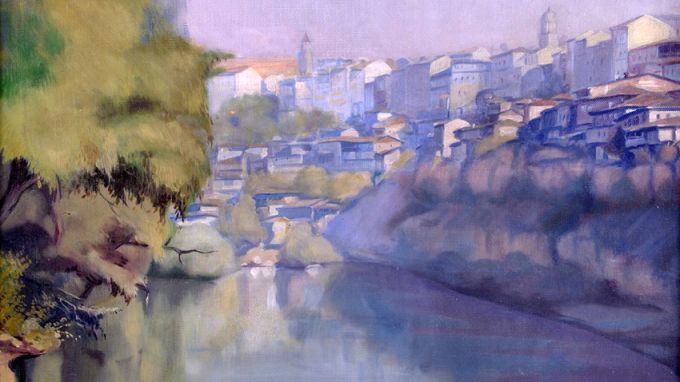 6
6
Ancient Bulgarian buildings and churches, cities rich in cultural heritage and seen through the eyes of artists from the beginning of the past century attract visitors to the National Art Gallery. An exhibition there shows visitors the beauty of Bulgarian lands, not only as an art experience, but also as a reflection on ways we preserve the valuable remains of civilizations, bequeathed to us over the centuries.
The Landscapes with Antiques Exhibition shows nearly 300 paintings in which artists reflect on the ancient heritage in Bulgarian lands. Artists of the Bulgarian National Revival period first showed interest in this heritage, influenced by the genre popular in European painting at that time.
“The purpose of the exhibition is to show this genre, which had been developing since the beginning of the 20th century and received its final outlook in the middle of the century,” curator Dorothea Sokolova says. “The genre is related to the process of discovering, studying and preserving cultural heritage, as well as creating the institutions of the new state. Moreover, it is original Bulgarian genre and does not emulate European models from the 17th - 19th century. So far, this genre has not been shown on its own, so the exhibition displays authors and stages of development."
Artists showed interest in landmark Bulgarian heritage - churches, monasteries, houses built in the classic traditions of the 19th century, picturesque ruins, National Revival towns and the cities of Sofia, Plovdiv, Tarnovo, Ohrid, Kavala, Sozopol, Nessebar. Among the authors of the oil paintings, drawings, watercolor paintings and printed graphics stand out the names of great artists from the first half of the 20th century like Petar Morozov, Nikola Tanev, Tsanko Lavrenov, Sirak Skitnik, Ivan Milev, Yaroslav Veshin, Vladimir Dimitrov - The Master and many others.
“The genre went through several stages - the earliest one is related to the European tradition of first generation academic artists such as Anton Mitov, Ivan Mrkvicka and Hristo Stanchev, followed by Impressionists and Expressionists,” Dorothea Sokolova says. “But the first significant work that started the modern genre somewhere around 1910 is ‘Saint Sofia's" Ruins’ by Nikola Petrov. Of course, apart from Bulgarian landmarks, artists also painted famous European monuments, but it is important that they brought knowledge about such symbols of Bulgaria culture as St, Sofia, the Boyana Church, the Rila Monastery, the ancient cities. It is important to point out that their works are not documentary pictures, but are artistic interpretations and different artists have different styles.”
And while artists were getting acquainted with the Bulgarian antiquities, recreating them on the canvas, the state was establishing the institutions needed for the study of artistic heritage and its preservation. This scientific side of things is represented in the exhibition by texts and photographs - from analyses of works of art and action taken by active Bulgarians during the Ottoman oppression for their preservation, to scientific researches and laws of the first decades of the 20th century. One of the people with the greatest contribution to the preservation of cultural heritage in our lands is artist Andrey Protich, a builder of contemporary Bulgaria, head of the then National Museum, with an invaluable contribution to the creation of modern laws regarding museums and antiquities. It is not by accident that a whole hall in the National Gallery focuses only on his work and bright personality.
English: Alexander Markov
Photos: courtesy of the National Art GalleryEuropean Days of Artistic Crafts are starting today in Bulgaria's Antonovo . The motto of this year's edition is "The Golden Thread", which is why it will begin with workshops on wool felting. Every day until the end of the week, residents and..
Writer Kalin Terziyski will present his collection of short stories "Is Anyone There to Love You?" at the Bulgarian Cultural Institute in Berlin on April 1. The book, translated into German by Elvira Bormann, tells of life in a city full of mystery,..
On Theater Day - March 27, the Union of Artists in Bulgaria traditionally presented the National Awards for Performing Arts IKAR. The award for outstanding contribution to Bulgarian theatre went to actor Yavor Milushev and was..
With Rosencrantz and Guildenstern Are Dead , young Boyan Kracholov - one of the most compelling contemporary Bulgarian theatre directors - makes his debut..
The first major ballet event in the festive jubilee programme celebrating the 100th anniversary of the Stara Zagora Opera is the premiere of "Parisian..

+359 2 9336 661
